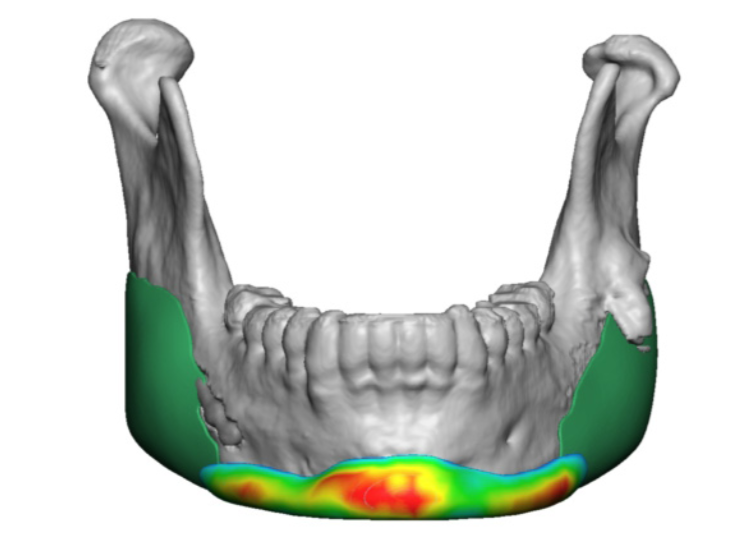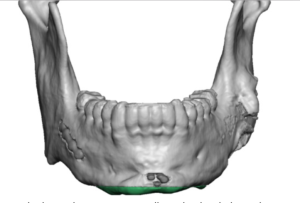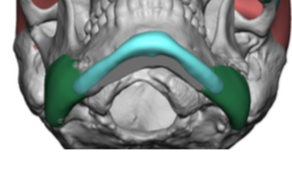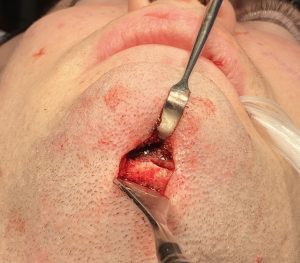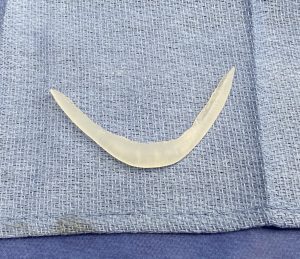Background: The well known sliding genioplasty procedure can provide multi-dimensional changes to the projection of the chin. With a downfractured and mobile inferior chin segment, it can freely be positioned ‘out into space’ to accomplish the desired chin augmentation effect provided that rigid fixation is used to hold it there.
But with that downfractured chin segment repositioning comes the possibility of asymmetry. If the free chin segment gets positioned with any degree of rotation or tilt, the chin can appear asymmetric afterwards. The greater the amount of chin movement or multi dimensional change, the more likely is the risk of asymmetry. Because the front edges of the bony chin segment remain ‘hidden’ in the chin pad soft tissues, more subtle amounts of bony asymmetry can not be seen during surgery.
When asymmetry exists after a sliding genioplasty the traditional thought process would be to redo the osteotomy and reposition the chin segment. While this can be effective and has its merits if other dimensional changes are also desired (e.g., more or less horizontal projection), there are alternative approaches to such postoperative chin asymmetry management.
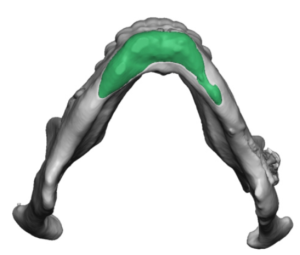
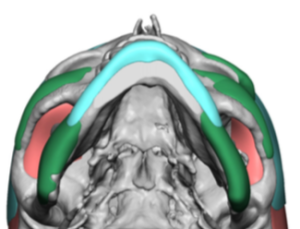
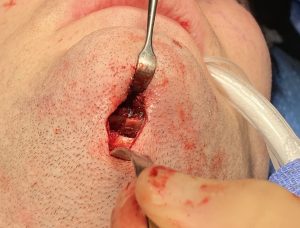
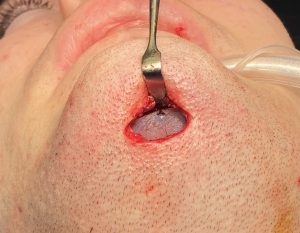
Alternative approaches to redoing an asymmetric sliding genioplasty are inferior border bony reduction to level out a vertical asymmetry and an overlay chin implant for horizontal asymmetries and/or additional augmentation. There are arguments to be made for redoing a sliding genioplasty or doing adjustments around the existing chin bone position. But when multidimensional adjustments are is needed it is more predictable to use a 3D computer design approach to make them.
Case Highlights:
1) Asymmetries of the inferior border of the chin after a sliding genioplasty can be leveled with an inferior border shave.
2) Additional horizontal chin augmentation can be done after a sliding genioplasty with a chin implant.
3) A custom chin implant after a sliding genioplasty is best of the goal is to cover the posterior stepoffs, widen the jawline and connect it with indwelling jaw angle implants.
Dr. Barry Eppley
Indianapolis, Indiana

